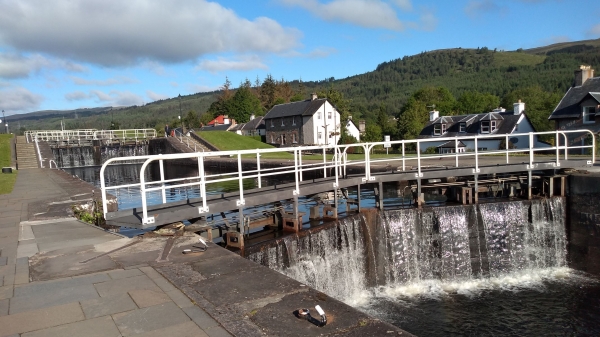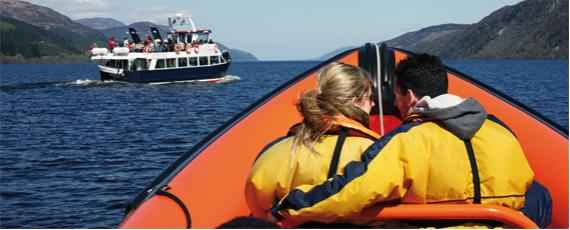
Linking the lochs of the Great Glen, the Caledonian Canal provided a safe route for naval and merchant ships to avoid the treacherous Pentland Firth and Cape Wrath.
Loch Lochy, Loch Oich, Loch Ness and Loch Dochfour provide much of the route along the Great Glen between Fort William and Inverness. Only relatively short artificial canals were required to link them together, with water supply guaranteed.
William Jessop and Thomas Telford head the list of engineers involved in the impressive project. At more than 50 yards (46m) long, its locks were huge by the standards of the time, with many of them arranged in staircases of interconnected locks. The massive eight-lock flight at Banavie, known as Neptune,s Staircase, is little short of breath-taking. The entire canal smacks of similar engineering feats on a grand scale.
There are 29 locks, 4 aqueducts, 8 road bridges and 2 rail bridges, along the length of the canal.
The canal was mechanised in the 1960s. Instead of using capstans and manpower, hydraulics are now used to operate locks and bridges. One original cast-iron bridge remains. Moy Bridge, near Gairlochy is still operated by hand, and the bridge keeper has to row across the canal to open both sides.
22 miles of the 60 mile waterway are man-made. The remaining 38 miles are made up of Loch Lochy, Loch Oich, Loch Ness and Loch Dochfour.
Work started in 1803, with over 1500 unskilled farmers digging the canal by hand. Opening in 1822, it still took another 25 years before the canal was fully complete.
Fort Augustus PH32 4BA
64 Metres



